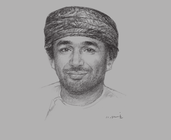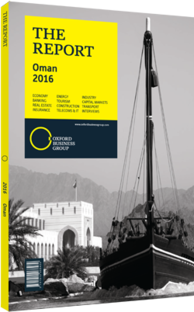Abdulrahman Al Hatmi, Director, Oman Rail: Interview

Interview: Abdulrahman Al Hatmi
What challenges is the Oman Rail Project facing from the current low oil prices?
ABDULRAHMAN AL HATMI: The low oil price environment is an extremely challenging one but we see the upside of it. It provides us with new opportunities and ensures that we do not become complacent and continue to rely solely on oil money to fuel economic growth. The current situation forces us to think differently and in-stils a sense of urgency in all other sectors to step up their performance. There are the negative impacts of course, mainly the capacity and cost of funding, but this is a short -term issue, and long-term decisions are not made based on short-term challenges.
We are being creative when it comes to funding the rail network. First, we have segmented our operations and built new models around the funding needs of the different business streams involved. We are in good shape because there are a multitude of investment opportunities associated with the project. Passenger terminals and operational maintenance, for example, are seen as very lucrative for investors. We have seen very good responses and are working to build on these potential partnerships. There is room to raise competitiveness standards which, once in place, will encourage plenty of international players.
How is Oman Rail working to best align itself with the goals of the logistics strategy and maximise added value to the sultanate?
HATMI: The rail project is the cornerstone of the logistics strategy and integrates the many pieces that must combine to make logistics a future economic driver. We think of ourselves as the backbone of the sector. Either directly or indirectly, the railway project will have a huge impact on the economy. We aim to increase capacity, reduce costs, improve efficiency and, ultimately, create economic freight corridors. First, we are focusing on market segmentation, which will ensure appropriate revenue streams and allow Oman to fully utilise its assets in the most efficient way. Second, we are focusing on competitiveness. To be successful globally, you must be competitive. Not only do we have tough competition regionally; we also have the large ports and extensive networks to compete with in the Indian Ocean. There is a market of over 2bn people in the Middle East and the Asian subcontinent, which we need to compete heavily for.
We have very good ports here, but ports that focus on trans-shipment add little value to the economy. To be competitive, we need to anchor businesses around the ports, free zones and industrial areas. This is what creates real economic growth. We are working directly with the ports, and our first priority is to connect all three of them. This alone will require 1500 km of track, but it will enable us to connect the whole country and reach optimum returns for all the entities involved and consequently support the economy. Connecting only one part of the network does not give us the maximum benefit that we will get from connecting all three ports.
How will knowledge transfer and capacity building be facilitated during the project?
HATMI: We have started building capacity in-house by making sure the brightest young Omanis are in on the ground floor of the project, and by ensuring that the development pathway is clear to everybody. It is important to realise that we are building a whole new sector, and we must encourage everyone to follow suit. Training, then, is a substantial part of both the sector and the project, similar to the way Omani skills have been developed in the energy sector. Our In-Country Value programme is an aggressive one, and is focused around three central objectives: offering opportunities to existing businesses; upskilling existing businesses and raising their capacities; and creating new industries, skills and technologies jointly with Omani small and medium-sized enterprises.
You have reached the limit of premium articles you can view for free.
Choose from the options below to purchase print or digital editions of our Reports. You can also purchase a website subscription giving you unlimited access to all of our Reports online for 12 months.
If you have already purchased this Report or have a website subscription, please login to continue.

